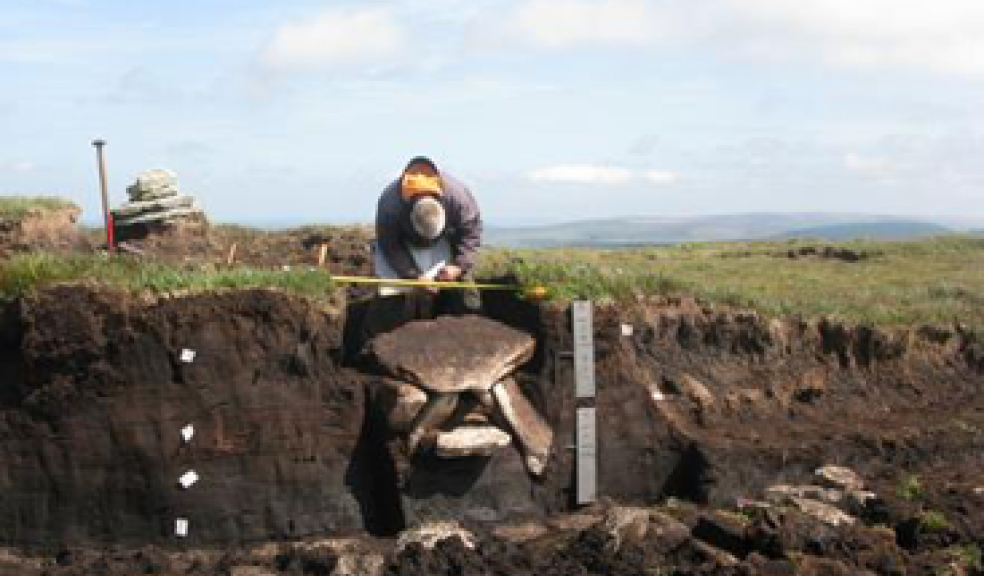
Whitehorse Hill excavation nominated for award
A dig which unearthed the remains of a Bronze Age burial on Dartmoor in 2011 has been nominated for a prestigious archaeology award.
The discovery of a unique collection of Bronze Age grave goods on Whitehorse Hill was made by archaeologists working for Dartmoor National Park Authority on Wednesday 10 August 2011 while excavating a prehistoric burial situated at over 600 metres above sea level on Dartmoor.
The nomination is for Rescue Dig of the Year and is part of the annual Current Archaeology Awards. Current Archaeology is the UK’s best-selling archaeology magazine, established in print in 1967 and on the web since 1996. The award winners will be announced on the 23-24 of Feb 2018 at the Current Archaeology conference in London.
The burial, a Scheduled Monument at risk, was set within an eroding island of peat and was first discovered over 10 years previously. Attempts to prevent its further deterioration failed because of its exposed location and the rescue excavation, which began that day in 2011, was crucial to help record the important fabric and content of the monument before they were totally lost.
What was discovered was an extraordinary and internationally important collection of Bronze Age grave goods, providing a rare glimpse into the personal and prized possessions of someone who lived on Dartmoor nearly 4,000 years ago.
Along with the cremated remains of a person of slight build aged 15-25 years old, the burial contained small textile fragments – possibly the remains of clothing, part of a shroud or a piece of textile that had been used to bind the body. A small amount of charcoaled oak and hazel wood was also present and most likely to have come from the funeral pyre.
The cremated remains and textile were wrapped within a brown bear pelt. This had been laid on top of a fine leather and textile object.
Concealed within the pelt was a beautifully woven basket with its fine stitching still visible. The contents of the basket included over 200 beads, two pairs of wooden studs and a flint tool. A delicate braided woven band featuring 32 tin studs lay beneath the bag.
Many of the beads are made from clay not local to Dartmoor. Others are shale from Dorset. A cylindrical tin bead, traces of a second tin bead which had not survived plus seven amber beads are of great significance.
The tin beads and rivets are the earliest examples of tin objects ever to be found on Dartmoor.
The two pairs of unique wooden studs, which may have been used as body or clothing adornments, are the earliest evidence for wood turning in the UK.
The leather and textile object is a combination of finely woven nettle fibre and thin calf skin and is unique in North Western Europe.
This unique assemblage of grave goods has given us an insight into ancient materials, technology and trade networks which existed on Dartmoor and across Europe in prehistory.
Current Archaeology Award winners are chosen by public vote and you can cast your vote now by visiting the Current Archaeology website www.archaeology.co.uk/awards. Voting closes on 5 February 2016.

















